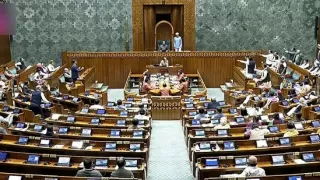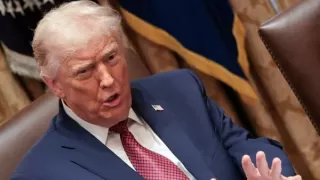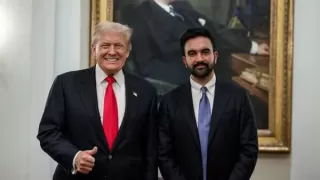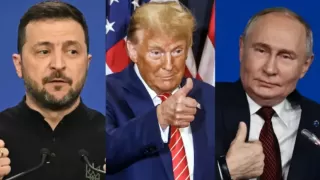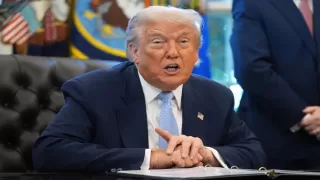The summit in Busan between U.S. President Donald Trump and Chinese President Xi Jinping signalled a dramatic thaw in one of the world’s most fraught bilateral relationships. After nearly two hours of face-to-face negotiation, Trump announced that tariffs on Chinese imports would fall from approximately 57 percent to 47 percent, contingent upon Beijing’s agreement to take concrete steps on fentanyl precursor controls, agriculture purchases and rare-earth exports. The high-stakes meeting was widely described as a “12 out of 10” outcome by Trump himself, reflecting the surprise degree of alignment he claimed to have achieved.
This move comes after years of escalating trade tension between the two economic giants — including mutual tariff hikes, export restrictions, and critical-minerals showdowns. In the deal struck, China consented to resume sizeable U.S. soybean purchases, maintain the flow of rare-earth materials crucial for global manufacturing, and cooperate on curbing the illicit trade of fentanyl and its chemical precursors. In return, the U.S. trimmed its punitive tariffs and signalled a desire to shift the relationship toward negotiation rather than confrontation.
Beyond the immediate trade concessions, the summit carried broader implications: the potential re-emergence of China-U.S. supply-chain interdependence, relief for U.S. farmers long hit by Chinese import restrictions, and a possible opening for diplomacy in other geopolitical arenas such as Ukraine and technology exports. While the details remain subject to formal negotiation and ratification, the atmosphere of optimism—unusual in recent years of US-China relations—was palpable.
Tariff Cuts and Fentanyl Trade Controls
One of the most dramatic outcomes from the Busan meeting was the announcement that the U.S. would reduce its tariff on Chinese goods tied to the fentanyl crisis from 20 percent to 10 percent, resulting in an overall tariff burden dropping from around 57 percent to about 47 percent. Trump pitched this as a direct exchange for Chinese pledges to crack down on the flow of illicit fentanyl chemicals entering the U.S. market.
According to the president, the deal reflects Beijing’s willingness to “work very hard to stop the death that’s coming in” due to fentanyl, and the tariff cut is conditional on those commitments. This linkage between trade policy and drug-control cooperation marks a novel approach in U.S.–China diplomacy, where trade leverage is being used to address a public-health and security issue.
Nevertheless, analysts caution that the tariff numbers are headline figures — the underlying structure of U.S. tariff-and-export-control regimes remains complex and there are many classes of goods and exceptions. Observers also note that while the reduction to 47 percent is significant, it still leaves U.S. tariffs on Chinese goods materially above pre-trade-war levels, meaning there is still structural tension in the system.
Agreement on Ukraine and Broader Geopolitical Cooperation
Although the summit was framed primarily by trade and economic terms, Trump revealed that the war in Ukraine also featured strongly in the discussion. He said that he and Xi had agreed to “work together” on the Ukrainian conflict, signalling a rare moment of Sino-U.S. diplomatic coordination on a major global security issue.
While the details are still scant, and both leaders stopped short of outlining specific actions, this mention of Ukraine is symbolic. It reflects an attempt by both capitals to broaden the scope of the summit beyond trade, factoring in security and geopolitical dimensions. Whether this translates into tangible cooperation remains uncertain.
The inclusion of Ukraine also underlines how intertwined economic and security issues have become in the U.S.–China relationship. What began as a trade war now spans rare-earth supply chains, narcotics flows, agricultural diplomacy, and frontline military conflicts. The Busan summit thus emerges as more than a trade negotiation—it is a potential junction of multi-domain diplomacy.
China Resumes Soybean Purchases
A major boon for U.S. agriculture came when Trump announced that China would immediately begin large-volume purchases of U.S. soybeans — reversing months of inactivity. Reports indicate that China’s state-owned COFCO had already bought three U.S. soybean cargoes ahead of the summit, marking the first purchases of the 2025 harvest.
This agricultural component is politically significant: U.S. farmers have suffered under Chinese retaliation and agricultural import bans. The resumption of large-scale soybean buys thus sends a message of goodwill toward the U.S. rural economy, even as broader trade issues remain contested. The timing of the purchase also suggests that Beijing wanted to enter the negotiations with a gesture.
Still, key details remain unspecified — volumes, long-term commitments, and price terms were not disclosed by either side. The risk remains that this could be a short-term purchase blip rather than a lasting structural reopening of the Chinese market to U.S. agriculture. Analysts will watch to see if this trend becomes sustainable in the months ahead.
Breakthrough Rare-Earths Deal
Perhaps the most consequential outcome for global supply chains was the announcement that China agreed to supply rare-earth minerals for an initial one-year agreement, with the possibility of renewal. Trump declared that “all the rare-earth issue has been settled,” noting the removal of export blockades that had threatened global manufacturing of EVs, smartphones and defence equipment.
China controls a dominant share of the world’s production and processing of rare earths — so the agreement reassures U.S. and global industries that a potential supply-shock has been averted, at least for the near term. For the U.S., maintaining access to these minerals is a strategic priority given their centrality to tech and security sectors.
On the flip side, because the deal is only one year in duration and subject to renewal, the underlying strategic rivalry remains. Supply-chain diversification efforts by the U.S. and its allies will continue, and China retains leverage as the dominant supplier. Thus while the deal is significant, many analysts caution it is a pause rather than a resolution of structural tensions.
Trump’s Upcoming China Visit and Future Path
To cap off the summit, Trump announced his intention to visit China in April 2026 for follow-up talks, with Xi Jinping expected to visit the United States later. Trump characterised the relationship as advancing to a “new phase” and expressed optimism about long-term collaboration.
But for now, many details remain in flux. Export-control regimes, tech access (notably high-end chips like Nvidia’s Blackwell line), and other contentious issues such as Taiwan, human rights and structural trade imbalance were not fully addressed. The summit therefore may mark the beginning of a recalibrated approach rather than a full resolution.
As markets digest the outcomes, the risks are clear: if the commitments on agriculture, rare earths and fentanyl control falter, the last decade of tension could return with renewed force. Yet for now, the Busan meeting stands as a potential pivot point — not only for U.S.–China trade, but for global economic and strategic architecture.
Also Read: President Murmu Takes Historic Sortie in Rafale at Ambala

















